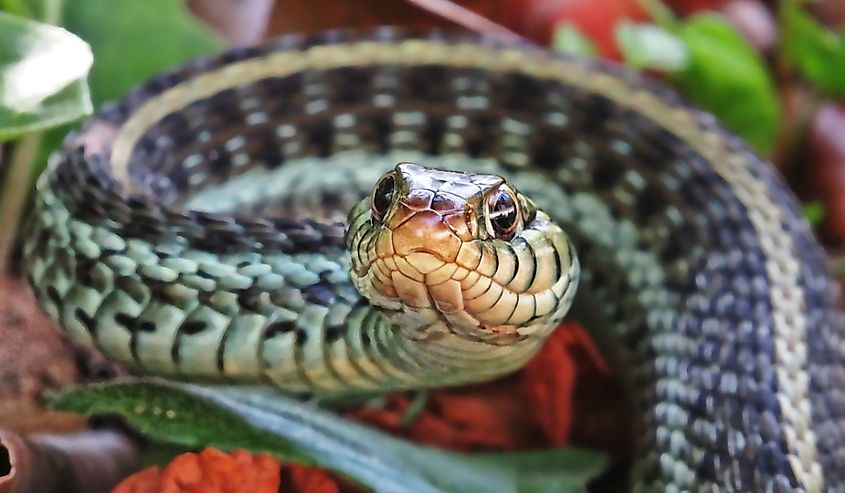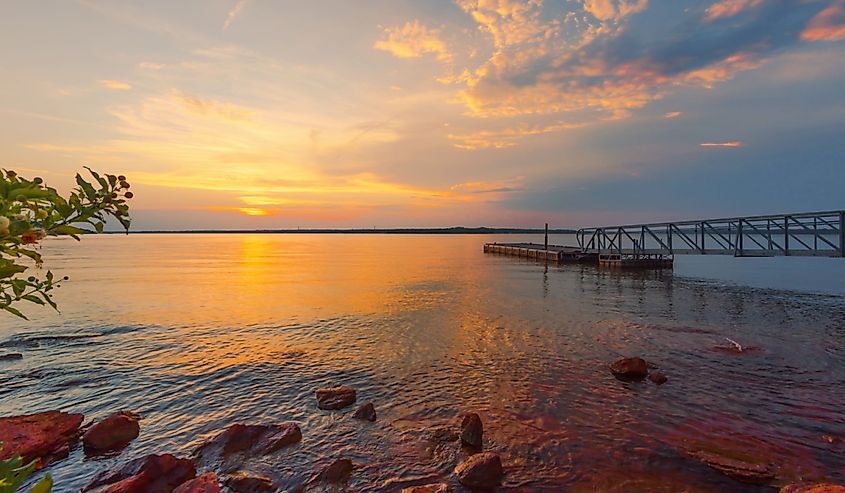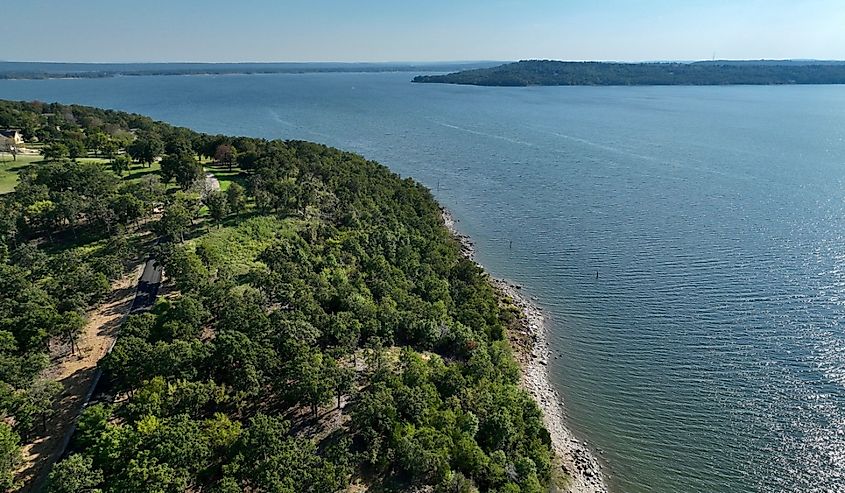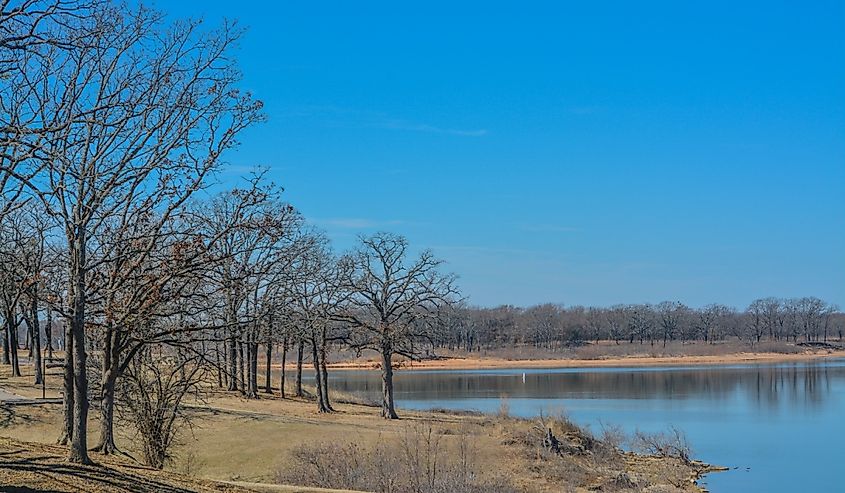
The Most Snake Infested Lakes in Oklahoma
Few terrors live in and below the waters of lakes and rivers throughout the continental United States that give eager boaters, swimmers, and aquatic enthusiasts more pause than snakes. In Florida, Alligators are plentiful and, for the most part, easy to see because they eventually have to surface for air. Snakes don’t have that type of survival necessity. It is with this knowledge and concern that many people will avoid jumping into unknown lakes and ponds without advanced knowledge of the life of local indigenous animals. These intelligent folks are right to be concerned, especially if they are new to five distinctive lakes scattered across the Oklahoma landscape. Some snakes will target swimmers and boaters, and some will avoid them, but all are worth knowing, recognizing, and respecting.
Collinsville Lake

A man-made reservoir, Collinsville Lake is only 25 feet deep and covers 55 acres. The topography is a range system, rising and falling throughout the perimeter of the lake and offering spectacular views. It is a very popular spot for water activities, mountain biking, hiking, and general nature trekking.
The most common snake to call this shallow lake home is the cottonmouth, a very venomous water snake that is only aggressive if threatened. Cottonmouths reside and breed in the surrounding marshes and the lake and have the heaviest population within the water snake community. Other snakes include garter snakes and rattlesnakes.
Lake Thunderbird

A beautiful spot to picnic and watch the sunset, Thunderbird Lake was created by an earth-fill dam on the Little River, extending 6,000 acres, and wasn’t intended to be a recreational lake. Its original purpose was to provide a municipal water source. In short order, it became a water recreation lovers paradise.
As is common in rural Oklahoma areas, wildlife is vast and diverse. As far as aquatic fauna, the common water snake has found a permanent home here. They live on the edges of the shoreline and in the water and can be seen basking on a warm rock in the sun from time to time. There are five varieties of water snakes, and they are, for the most part, non-venomous.
Lake Hefner

Another lake intended to provide water to the populace, this impressive lake near the capital city was built in 1940. It is named after the mayor of Oklahoma City, Robert A Hefner, who led the city and its people from 1939-1947. It is 2,500 acres, but it fluctuates based on water consumption, rainfall, and evaporation.
Water Snakes, Garter Snakes, And Rattlesnakes are at home here due to the tree cover coupled with the heat that the state often sees during the summer months. As stated before, the water snakes are largely non-venomous, but the garter snakes do have a modest amount of venom, and the Rattlesnakes should be respected and avoided if in your vicinity.
Lake Eufaula

The largest of the snake-infested lakes, Lake Eufaula is massive, at 102,000 acres and over 600 miles of shoreline. It is a reservoir on the Canadian River, dammed to provide a water source to surrounding towns and flood control. Its impressive size makes it a premier location for a myriad of water sports and activities.
As one might expect, the lake's size provides plenty of space for snakes of various kinds to make their homes. Water snakes, Copperheads, and Western Diamondbacks are the three types of snakes that swimmers and boaters might encounter. They are often seen in the marshy areas around the lake but have also been spotted near less popular swimming spots and should be left alone if found.
Lake Texoma

Nestled between Oklahoma and Texas near US Highway 54, Lake Texoma is worth the trip, especially for a break from the blazing northern Texas summer heat. It was created by the Denison Dam and covers an impressive 89,000 acres. Built in 1944, it is considered one of the largest lakes in the United States.
A large body of water attracts a notable number of water snakes, including the common water snake, copperheads, and rattlesnakes. Mostly, they avoid swimmers and boaters and are more often seen fishing and hunting for insects and small rodents. That doesn’t mean they are harmless. Lake Texoma hosts many venomous and non-venomous snakes, so it's important to know which ones to watch out for.
Like all animals, knowledge is power. Most people tend to avoid snakes on principle, and if that’s your stance, it’s not a bad plan. However, if you have little fear of these misunderstood reptiles, knowing what you might encounter before you swim or boat is important. A foolish move toward a cottonmouth or rattlesnake can quickly put them on the defensive. Be smart, learn about your snakes, and stay away from them.











